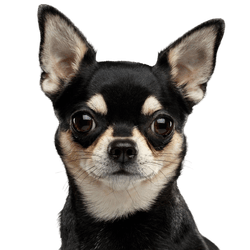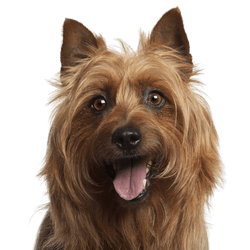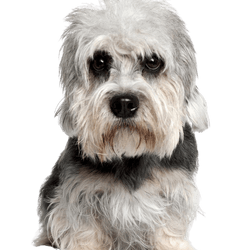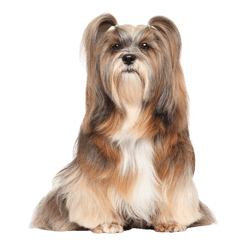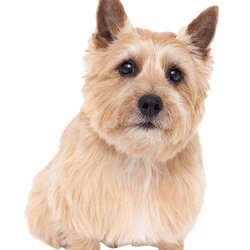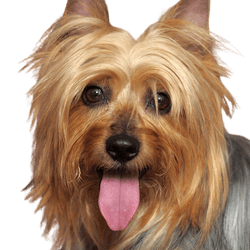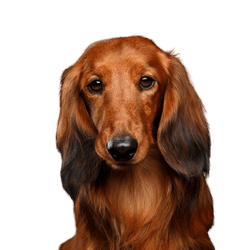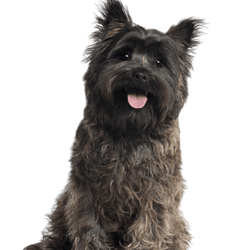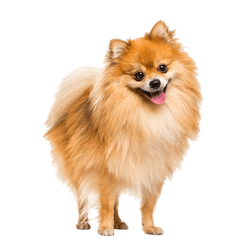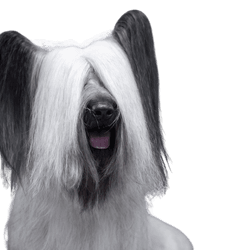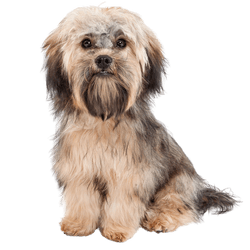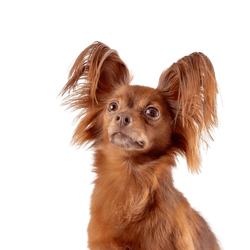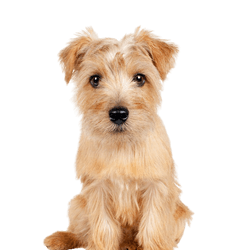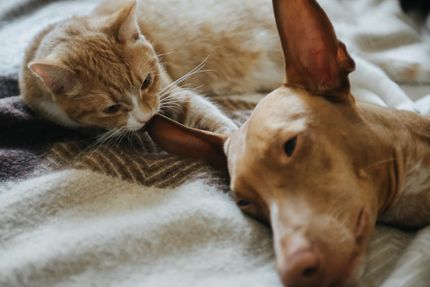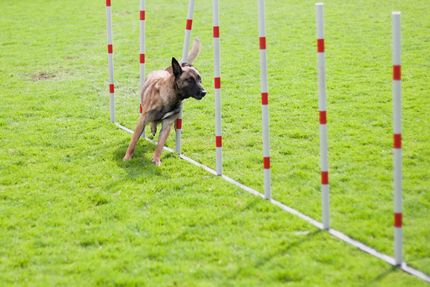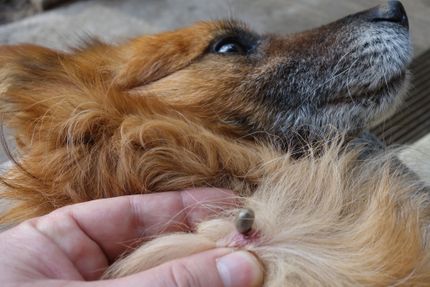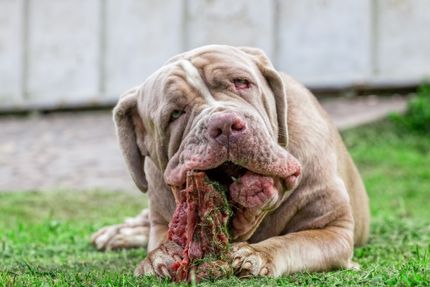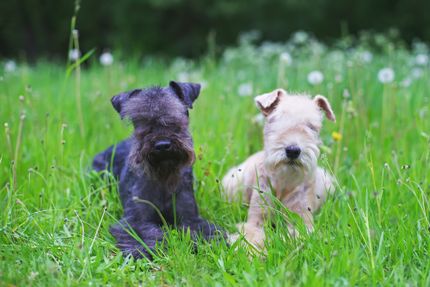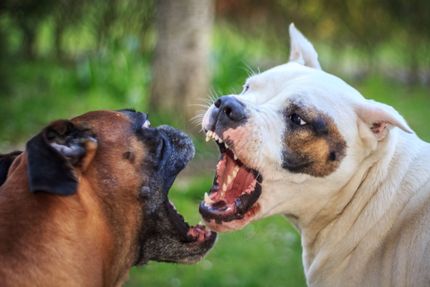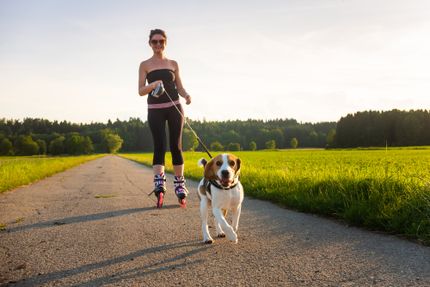
Pug Breed description: Character & Co
Pug
Facts & Origin
Charming, intelligent and full of energy: The lively pug enchants dog lovers not only with its loving nature, but also with its big eyes and crinkly face. The following guide will tell you everything you need to know about this lively little animal.
What is the origin of the pug?
The breeding of pugs began 2,000 years ago in China. At that time, the pug was considered the emperor's dog and could only be kept by monarchs. In the 16th century the lively four-legged creature first came to Europe with Dutch traders. Here too, they were popular in numerous royal houses.
The pug was especially popular in noble lady circles - Queen Victoria was even an enthusiastic pug breeder. The little four-legged friend was therefore considered an absolute fashion dog for a long time. However, the breed began to degenerate relatively quickly, as they did not lead a species-appropriate life. Towards the end of the 19th century the interest in the pug seemed to diminish considerably.
In the meantime, however, the breed is experiencing an enormous upswing once again.
What are the breed characteristics of a pug?
The pug is a dog breed recognised by the FCI and is classified as a society and companion dog. An obligatory dog handler's license is not necessary for keeping a pug, as it is not registered as a list dog neither in Germany nor Austria.
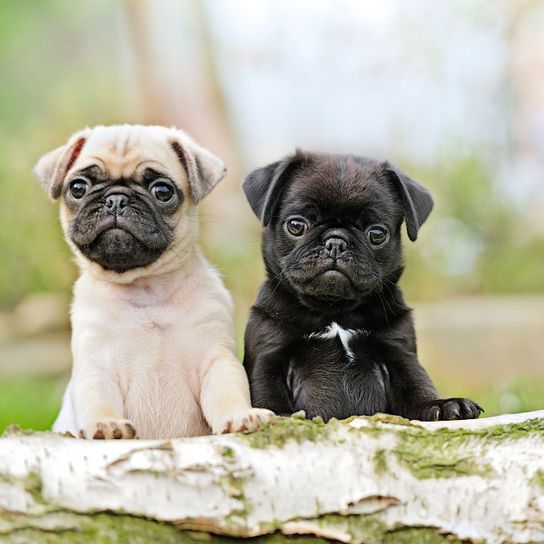
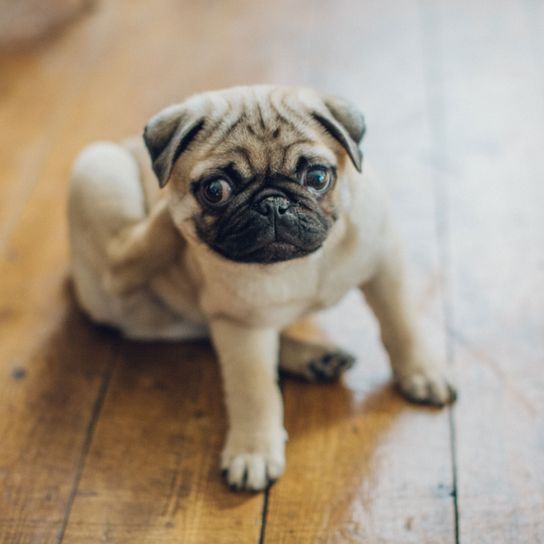

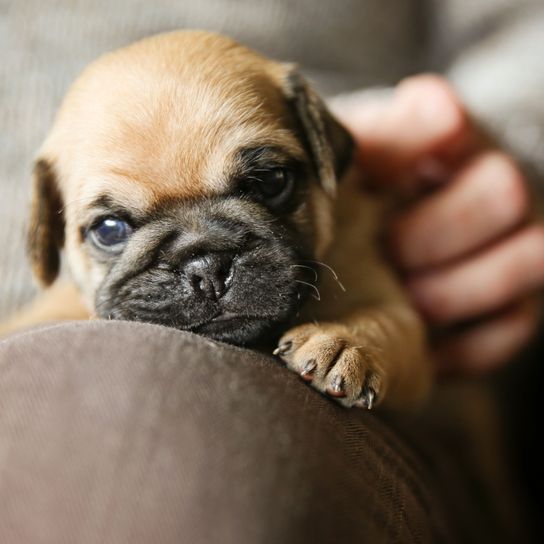
| Alternate Name | - |
| Origin | China |
| Life expectancy | 12 - 15 years |
| Care requirements | low-maintenance |
| Activity level | low |
| FCI group | Small Molossian type Dogs |
| AKC group | Toy Group |
| KC group | Toy Group |
Pug mixes
Attitude, character and temperament of the breed
What are the typical character traits of a pug?
The little animal is a loving family and companion dog. Due to its size it can be kept in an apartment without any problems. They are little charmers who likes to wrap their owners around their fingers with their cute personality. Apart from that, pugs are extremely intelligent and graceful. There is a reason why they were kept in aristocratic houses in the past. They toddle sensitively through the world and any change of mood is immediately noticeable.
This dog breed is particularly affectionate and cannot cope with loneliness. If you want to buy a pug, you should therefore make sure that you have enough time for the animal. This playful four-legged friends does not like it at all, when they are not being involved in your everyday activities. If a pug feels neglected, they like to draw attention to themselves by making different sounds or corresponding gestures. Training should already begin at puppy age in order to limit their stubbornness a little.
When they are in contact with other dogs, pugs sometimes tend to overestimate themselves. Nevertheless, they are peace-loving and can be kept well with other pets. However, they often have problems to assess certain situations correctly, which can sometimes put them in dangerous situations.
Character
Usage

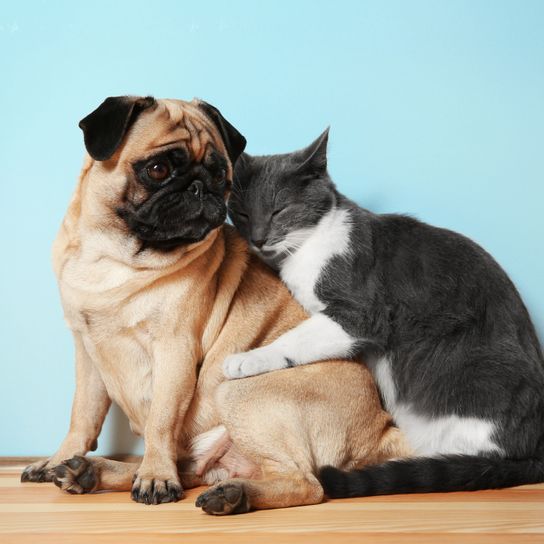
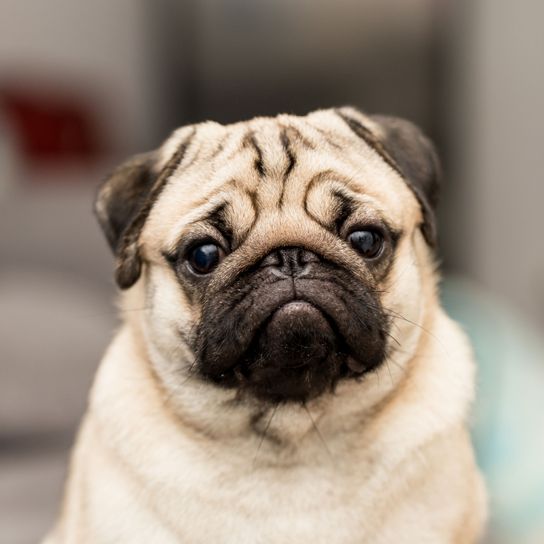
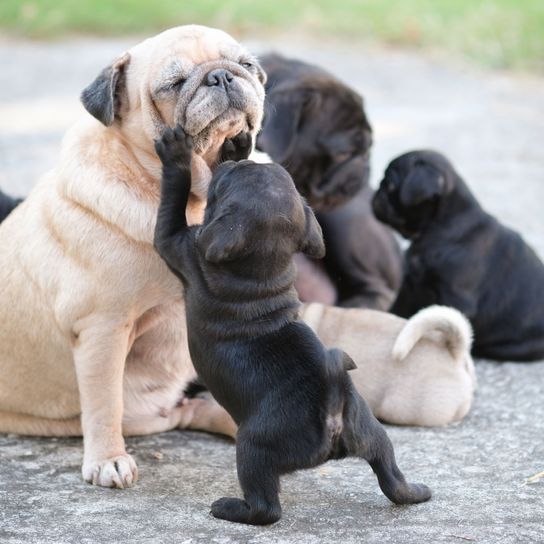

Health and breeding information
What are typical diseases of a pug?
A typical civilisation disease of this dog breed is overweight. If your dog doesn't move enough and gets fed too much in proportion to amount of exercise done, it can easily happen that the animal puts on a few kilograms too much.
Being overweight can, in the worst cases, lead to cardiovascular disease and diabetes mellitus. In addition, excess weight can quickly lead to overloading of the small dog's musculoskeletal system. Especially dog breeds such as pugs tend to suffer from hip dysplasia and spondylosis.
The big eyes of the dog are another weak spot. If you do not clean your dog's eyes regularly, this can lead to corneal inflammation.
Other racial diseases among others are:
- Atopia
- Skin wrinkle dermatitis
- Demodicosis
- Hereditary diseases
- Urinary stones
What should be considered in regards to pug breeding?
Breeding should always be done according to current standards. Especially with pugs, well-opened nostrils are important. The animals already have a predisposition to respiratory diseases, which is why many breeders nowadays try to give the dog more of a "nose" again. This dog is called Retro Pug. Also a corresponding size for breeding is preconditioned. You can find further conditions for breeding pugs here.
If you are interested in a pug, you should always buy it from a serious breeder. In most cases, you pay between 600 and 1200 Euro. The money is well spent, however, because you can be sure that the animal is healthy and that there are no hereditary diseases. Before buying you should also inform yourself about the parents of the puppy. If you would like to, you can also rescue a pug from the shelter. Many of these animals have been looking for a nice home for a long time.

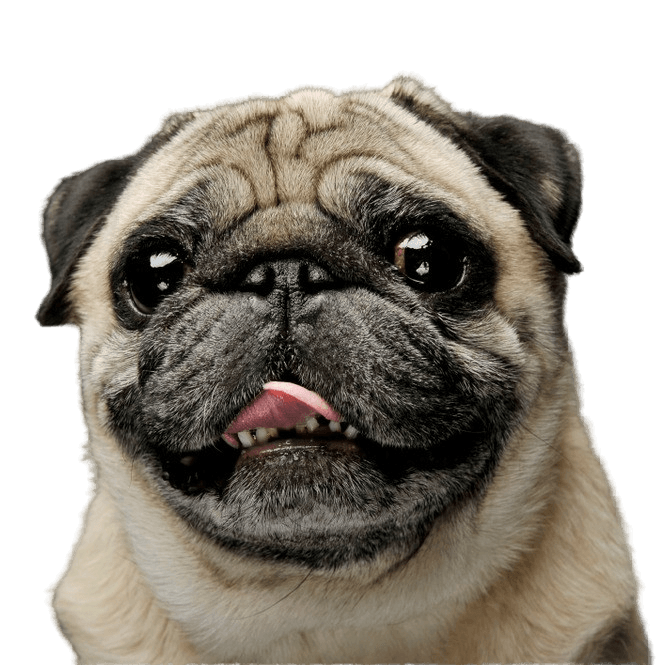
Characteristic for the pug are the emerging wrinkles on their forehead as well as their black nose and the curled tail. In contrast to their body, their head is relatively large, which gives them their distinctive crumpled face. The dog breed has large and wide open nostrils. A compressed nose and wrinkles on the bridge of the nose are considered unacceptable. Heat causes pugs a lot of trouble and in the worst case can even increase their frequent breathing problems.
Appearance and coat of the pug
Because of its typical appearance, you can quickly distinguish it from other dogs. Their short, soft and shiny coat is characteristic. Colour schemes range from uni-coloured black to silver-grey and various shades of beige.
Among other things, you can recognise a pug by its dark eel line on top of their backs as well as their black claws. In contrast to other dog breeds, deep forehead wrinkles adorn the face of the pug, which usually appear in a slightly darker shade. The ears are usually thin, black and fall forward. Their cute appearance is further enhanced by their dark botton eyes.
What is the average size of a pug?
Pugs are relatively small and only reach a height of 25 to 32 cm measured at the withers.
How much does a pug weigh?
According to breed standards, the ideal weight of a pug lies between 6.3 and 8.1 kg.
What is the average lifespan of a pug?
The age of a pug depends on the way it is kept as well as on the quality of their diet. On average, the life expectancy lies between 12 and 15 years.
The pug is generally not suitable for allergy sufferers.
| Fur length | short |
| Fur | flat coated |
| Ear shape | Tilt-ear |
| Tail | stubby |
| Anatomy | massive, square, hefty |
| Size ♀ | 22 - 25 cm |
| Weight ♀ | 6 - 8 kg |
| Size ♂ | 25 - 30 cm |
| Weight ♂ | 6 - 8 kg |
| Suitable For | Beginner, Children, Seniors |
Colors

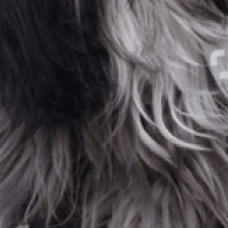
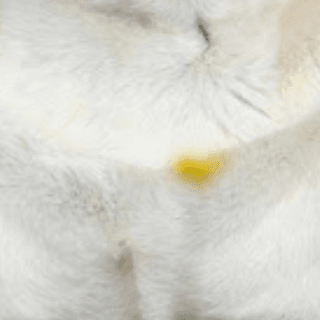





Known Diseases
Breathing problems
Dogs with shortened muzzles can often experience respiratory problems.
Denture malocclusions
Malocclusions of the dentition often occur in dogs with short muzzles.
Heart disease
Can occur frequently in dogs and can sometimes be treated with medication.
Hip dysplasia (HD)
The hip dysplasia or hip joint dysplasia of the dog (HD) is a maldevelopment of the hip joint.
Shortness of breath
Difficult breathing can be recognized by the dog's rattling and sometimes accelerated breathing rate.
Overweight
Often, unfortunately, the dogs very much under excess weight. But the dogs themselves are never to blame!
FAQ
-
A pug costs about 1200 to 2000 euros. Retromops puppies cost about 1600 Euro.
-
A pug can also be kept in an apartment without any problems and is a cuddly companion.
-
No, there is only a breed called Retromops. They have longer legs and snouts for better breathing.
-
Pugs are considered docile fellows and have some great chaacter traits. They are considered smart.
-
Yes, the pug is a good family dog.
Other small dogs
Useful Articles
You can find articles that might interest you in the dogbible blog to match your favorite breed.
Visit our magazineto stay up to date on dog trends.
To find out more, view our Privacy Policy
Find here the breed that suits you and find out what character traits it has. Here you can also learn more about the origin, size and weight of your favorite breeds.
Matching your favorite breed, you'll find articles that might interest you on the dogbible dog blog.
8 activities in Austria for dogs in winter
3 tips for snowshoeing with dog
Travelling with a dog in a Camper - this is what you have to bear in mind!
Tips for Mallorca holidays with dog - these hotels and places you should know





